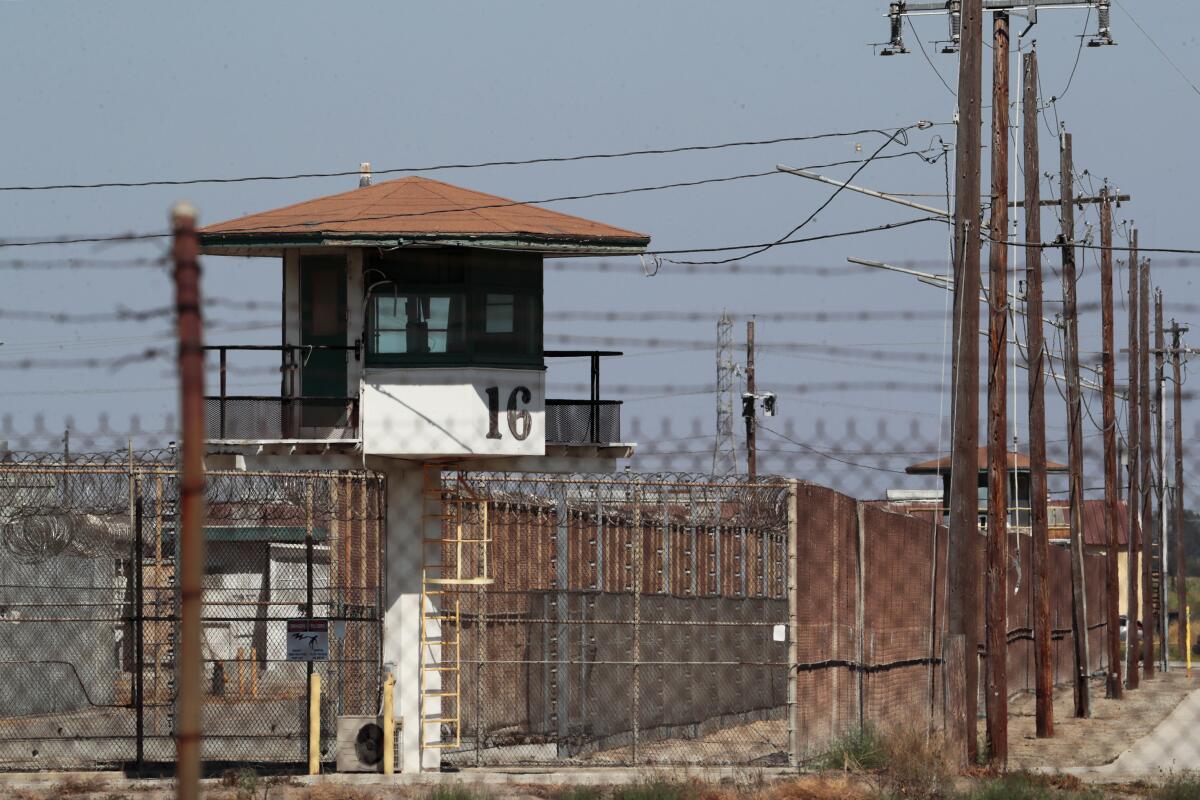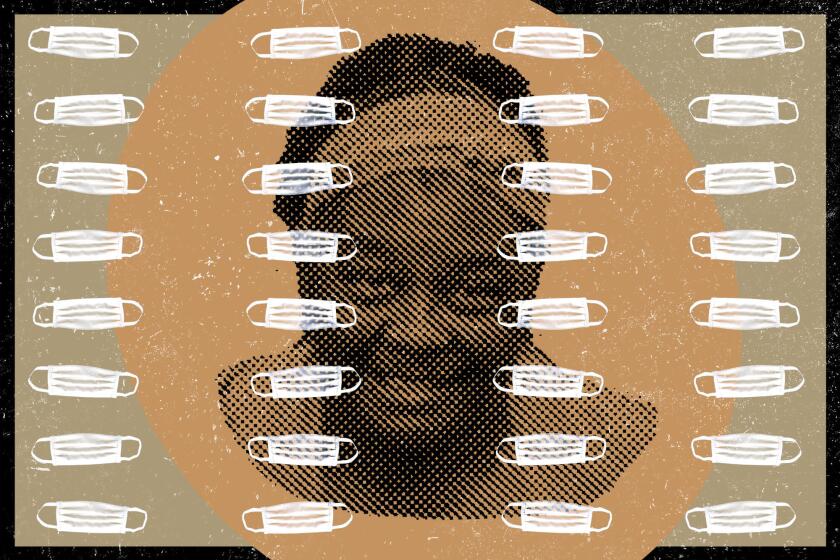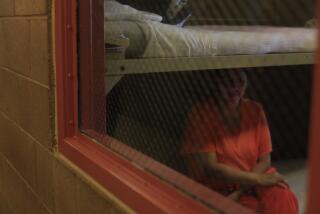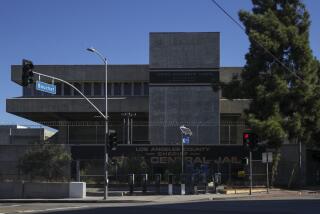Report: Four of California’s prisons ranked worst at handling COVID, care for inmates

- Share via
More than three years after the pandemic started sweeping through the California prison system, a report from UCLA offers a new measure of just how bad it was — and which prisons handled it the worst.
After analyzing nearly 300 letters and interviews from people in prison, a team of law students ranked which facilities had the most red flags for potential constitutional violations between April 2020 and April 2021, the first year of the pandemic.
At the top of the list were the prisons in Chino, Solano, Chuckwalla and Mule Creek.
“These four facilities were routinely the worst,” said Joseph Gaylin, one of the law students behind the study. “These were the places where there have been the most people highlighting problematic responses — in an egregious sense.”
At all four prisons, the “medical care and conditions of confinement” stood out as particularly troubling, the report noted. “As a result, class actions brought on behalf of a large number of incarcerated people — so-called institutional reform litigation — may be particularly apt for these four facilities.”
Right behind those four were the prisons in Calipatria, San Quentin and Soledad. Although the San Quentin facility made headlines early in the pandemic for its high infection rate and death toll, Soledad drew criticism a few weeks later when a 3 a.m. raid on Black inmates turned into a superspreader event.
But there were red flags at all 28 of the facilities included in the report. Roughly half of respondents overall expressed concerns about the quality of healthcare they received during the pandemic, and 14 said they were explicitly denied medical care after contracting the virus.
The researchers also found widespread reports of abuse, extreme isolation and medical neglect that were often never reported by official oversight bodies, they said.
California Department of Corrections and Rehabilitation spokeswoman Terri Hardy told The Times on Tuesday that the agency could not fully respond without reviewing the report, but she stressed that officials take “very seriously” the health and safety of staff and prisoners.
“We have and continue to work diligently to address the impacts of the COVID-19 pandemic with transparency and federal court oversight,” she added.
The findings come more than three years into a pandemic that has killed 260 incarcerated people and sickened more than 93,000 in California prisons, according to state data. But the usual quantitative measures — death and infection data — tell only part of the story.
The UCLA team wanted to find a way to examine problems that are harder to quantify, such as deteriorating conditions, neglectful staff and the toll of extreme isolation in prison. To do that, they turned to researchers at UC Irvine, who had already received thousands of letters and phone calls for their PrisonPandemic project, an ongoing initiative to document the experiences of people in California prisons.
After poring over hundreds of calls and letters sent to PrisonPandemic researchers between April 2020 and April 2021, the UCLA team coded and analyzed the contents of each response.
Many of the findings may not come as a surprise to anyone who’s been following the pandemic’s impact behind bars and the California prison system’s poor track record of handling it.
Nearly half of respondents overall described conditions where social distancing was impossible. Some described absurd attempts to implement it, such as taping off sections of dorms to stop the spread. Several people said their facilities did not quarantine people who tested positive for COVID.
Inmates who made masks and furniture for as little as 35 cents an hour say they felt pressure to stay on the job, even as the coronavirus spread through the prison factories.
And 23 people reported that — despite policies requiring testing and quarantines upon intake — new prisoners were neither quarantined nor tested after admission or following facility transfers.
Forty-eight people said they were exposed to COVID when officials failed to follow medical protocols — failures that “went well beyond mismanagement,” the UCLA team wrote. Fifty-seven respondents said staff didn’t comply with mask mandates, even when prisoners were made to mask constantly under threat of punishment.
More than 110 prisoners reported major sanitary problems, including roofs so leaky that rain was “literally coming through the roof in sheets” and kitchens plagued by “mold, bugs, rats, and Lord knows what else.”
Several recounted outbursts of violence that were related to the pandemic, such as abuse at the hands of staff who grew unhappy with complaints about their poor adherence to virus protocols. There were also reports that staff sometimes threatened prisoners with solitary confinement — which the United Nations deems torture — if they complained.
“We found that incarcerated people were subjected to extreme isolation, systemic medical neglect, and physical and verbal abuse — all of which went largely unreported by existing oversight bodies,” the UCLA team wrote.
Though many of those problems were also broadly reported in other prison systems, researchers said some of their findings were surprising even to people already familiar with the pandemic’s effect on people behind bars.
“We all knew the conditions were going to be poor, but the degree to which they were was surprising,” said Kamilah Mims, one of the law students who wrote the report. “For instance, reading about the conditions of the cells — vermin running around, freezing cold, rat poop and roaches.”
Overall, the report found, many of the complaints — including those about the denial of medical care, the unsanitary conditions, the reports of food rationing and the lack of human contact — could rise to the level of constitutional violations under the 8th Amendment’s ban on cruel and unusual punishment.
“There was a narrative coming out of the pandemic that prisons were responding to an emergency and in responding to that emergency there were inevitably going to be some people left behind,” Gaylin said.
“I think the results of our report show that nothing about what happened in California state prisons was inevitable,” he said. “It wasn’t negligent medical care because they were stretched thin — it was intentional wrongdoing.”
More to Read
Sign up for Essential California
The most important California stories and recommendations in your inbox every morning.
You may occasionally receive promotional content from the Los Angeles Times.












